Sigma 8-16mm f/4.5-5.6 EX DC (vs Sigma 12-24 on FF)
For years, there has not be any equivalent of the Sigma 12-24 for APS-C users. I have really appreciated the 12-24 on FF, and I wished to see something similar for my Canon 7D. In early 2010, Sigma has announced such lens: the 8-16mm, a lens created exclusively for APS-C cameras. It gives exactly the same angle of view of the 12-24 on FF (if you have a Nikon APS-C camera, 1.5x crop factor), and a very similar angle of view on Canon APS-C cameras, that have a 1.6x crop factor. I have tested this lens on my 7D and I have compared it with the 12-24 on 1Ds3!
As usual, I recommend to give a look to the page
Testing and reviewing a lens: it will help you to understand better this review and my testing methodology!
Specifications (compared with similar lenses)
����| � | � �Sigma 8-16mm f/4.5-5.6 HSM | � �Sigma 10-20mm f/3.5 EX HSM | � �Sigma 12-24mm f/4.5-5.6 DG HSM |
�
| �Angle of view | � �118º - 80º (on 1.6x APS-C) | � �107º - 68º (on 1.6x APS-C) | � �122º - 84º (on FF) |
�
| �Macro ratio | � �0.13x | � �0.15x | � �0.14x |
�
| �Max aperture | � �f/4.5-5.6 | � �f/3.5 | � �f/4.5-5.6 |
�
| �Stabilization | � �No | � �No | � �No |
�
| �Autofocus | � �Ultrasonic AF Motor | � �Ultrasonic AF Motor | � �Ultrasonic AF Motor |
�
| �Closest focus | � �0.24 meters | � �0.24 meters | � �0.28 meters |
�
| �Dimensions | � �75 (D) x 105 (L) mm | � �87 (D) x 88 (L) mm | � �83 (D) x 107 (L) mm |
�
| �Weight | � �550 g | � �520 g | � �615 g |
�
| �Weather sealing | � �No | � �No | � �No |
�
| �Price | � �$ 700 | � �$ 650 | � �$ 860 |
�
| �Production | � �2010 - | � �2009 - | � �2003 -� |
�
Built quality and autofocus
The 8-16 has the classic built quality of Sigma wide angles: pretty good, not as solid as the Canon 17-40 or other L lenses, but still good enough for every use. It is slightly smaller and lighter than its fullframe equivalent, but there is not an huge difference. It has two rubber rings, one for zooming between 8 and 16mm, and the other for manual focus; since it has the ring type USM motor, you can focus manually in every moment, even when the focus switch is set on AF. The minimum focusing distance is just 24 centimeters, but due to its extreme angle of view, it has a quite poor reproduction ratio, like the Sigma 10-20 and 12-24.
The autofocus is fast (on par with other wide-angles in the same price class); it has not image stabilization. As I say every time, I consider IS an important feature in every lens, included wide angles, so I really hope to see stabilization in future Canon or Sigma wide-angles!
The f/4.5-5.6 aperture is pretty dark, but for landscape photos it is not a problem, since the most used apertures are much smaller (I tend to use f/11 or f/16 on fullframe and f/8 or f/11 on APS-C). That said, if you plan to take many night photos, the aperture becomes important: in this case, I'd suggest to look for another wide-angle with brighter aperture, as the Tokina 11-16 f/2.8.
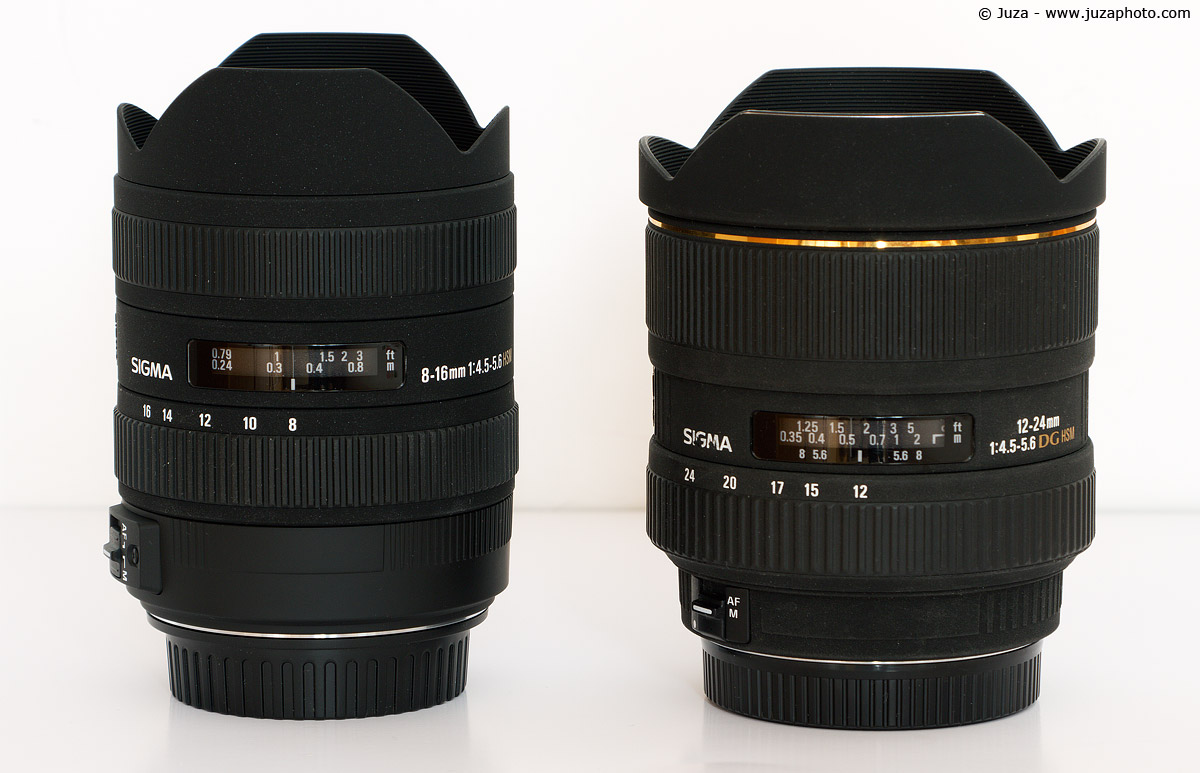
Image quality (in comparison with Sigma 12-24)
This time I have done a different comparison than usual. Generally I use same camera and identical settings; this time, instead, I have compared the Sigma 8-16 on 7D (18 megapixels, APS-C) with the Sigma 12-24 on 1DsIII (21 megapixel, fullframe). Why? There is not any lens that can be really compared to the 8-16, except for the 12-24; other APS-C wide-angles does not come close the extreme angle of the 8mm.
In many of my trips around the world I want to replace completely the 1DsIII with the 7D, so I want to see if in practice the 8-16 can really replace the 12-24; for this reason I have compared focal lengths that give approximately the same angle of view. I have taken test photos at 8mm (12mm for the 12-24), 11mm (18mm for the 12-24) and 16mm (24mm for the 12-24) both wide open and at the aperture I use most often for landscapes (f/11 of the 8-16 and f/16 for the 12-24). The lenses were mounted on tripod; I have used mirror lock up and self timer. The following images are 100% crop from the unprocessed RAW file.
����| � | � �Sigma 8-16 at 8mm (on Canon 7D), center | � �Sigma 12-24 at 12mm (on Canon 1Ds3), center |
�
| �f/4.5 | � � | � � |
�
| �f/11-f/16 | � � | � � | �
�
����| � | � �Sigma 8-16 at 8mm (on Canon 7D), upper left corner | � �Sigma 12-24 at 12mm (on Canon 1Ds3), upper left corner |
�
| �f/4.5 | � � | � � |
�
| �f/11-f/16 | � � | � � | �
�
����| � | � �Sigma 8-16 at 8mm (on Canon 7D), upper right corner | � �Sigma 12-24 at 12mm (on Canon 1Ds3), upper right corner |
�
| �f/4.5 | � �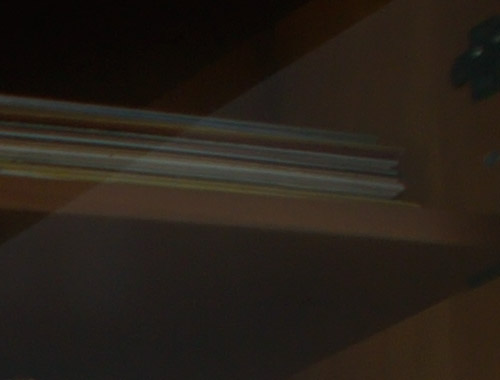 | � �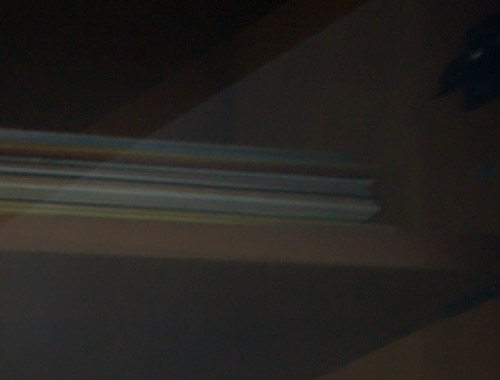 |
�
| �f/11-f/16 | � � | � � | �
�
����| � | � �Sigma 8-16 at 8mm (on Canon 7D), lower right corner | � �Sigma 12-24 at 12mm (on Canon 1Ds3), lower right corner |
�
| �f/4.5 | � � | � � |
�
| �f/11-f/16 | � � | � � | �
�
����| � | � �Sigma 8-16 at 8mm (on Canon 7D), lower left corner | � �Sigma 12-24 at 12mm (on Canon 1Ds3), lower left corner |
�
| �f/4.5 | � � | � � |
�
| �f/11-f/16 | � � | � � | �
�
At 8/12mm, the two lenses are nearly identical in the center (the 8-16 has a little more contrast, but it is not an huge difference). In the corners, it is a different story. As you can see, here I have shown crops from all four corners: the reason is that the 12-24 has not an uniform sharpness. The 8-16 is always better, but in the lower right and upper right corners the difference is small, while in the upper left corner there is a bigger difference, and in the lower left corner the 8-16 is much sharper than the 12-24 at every aperture.
����| � | � �Sigma 8-16 at 11mm (on Canon 7D), center | � �Sigma 12-24 at 18mm (on Canon 1Ds3), center |
�
| �f/5.0 | � � | � � |
�
| �f/11-f/16 | � � | � � | �
�
����| � | � �Sigma 8-16 at 11mm (on Canon 7D), corner | � �Sigma 12-24 at 18mm (on Canon 1Ds3), corner |
�
| �f/5.0 | � � | � � |
�
| �f/11-f/16 | � � | � � | �
�
At 12/19mm, the comparison is very similar: no real difference in the center, while the 8-16 has better corners. Here I have not done again the additional crops (to avoid getting mad :-)), but like 12mm, even at 18 the Sigma 12-24 show different sharpness between the four corners, while the 8-16 has a much more uniform sharpness.
����| � | � �Sigma 8-16 at 16mm (on Canon 7D), center | � �Sigma 12-24 at 24mm (on Canon 1Ds3), center |
�
| �f/5.6 | � � | � � |
�
| �f/11-f/16 | � � | � � | �
�
����| � | � �Sigma 8-16 at 16mm (on Canon 7D), corner | � �Sigma 12-24 at 24mm (on Canon 1Ds3), corner |
�
| �f/4.5 | � � | � � |
�
| �f/8-f/11 | � �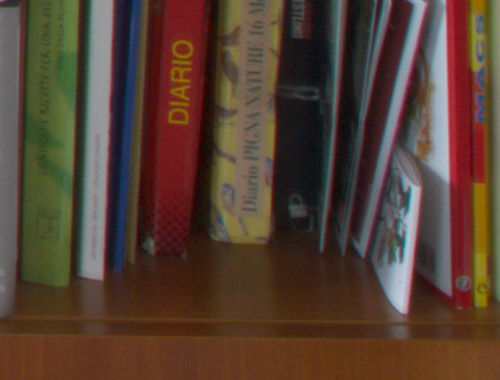 | � � | �
�
At 16/24mm, again, the center is identical while the 8-16 wins in the corners; the 12-24 has good lower right corner but the other corners are much worse.
Distortion, vignetting, angle of view
These photos show how the 8-16 and the 12-24 compared in terms of distortion, vignetting and angle of view. The 8-16 was on 7D and the 12-24 was on 1Ds Mark III.
����| �8-16 at 8mm f/4.5, on Canon 7D | � �12-24 at 12mm f/4.5, on Canon 1DsIII |
�
� | � � | �
�
����| �8-16 at 16mm f/4.5, on Canon 7D | � �12-24 at 24mm f/4.5, on Canon 1DsIII |
�
� | � �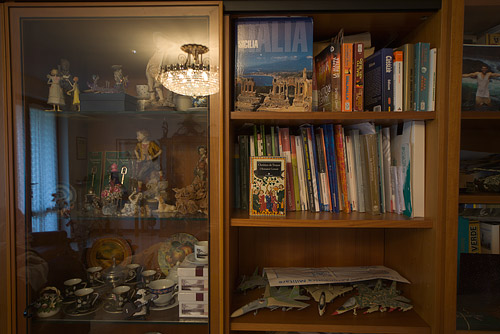 | �
�
On the Canon 7D, the 8-16 is the equivalent of about 13-26mm on fullframe. The 1mm difference between 12mm and 13mm equiv. is clearly visible, even tough they are both very wide. On Nikon cameras, you get a real 12-24 equivalent. The 8-16 has slightly less distortion than the already good 12-24, and it shows less vignetting.
Samples and comments
These are some sample photos taken with the Sigma 8-16mm on Canon 7D. You can download either the untouched photo (JPEG converted from RAW without any additional post processing; minimum contrast and saturation, no sharpening, no AC, distortion or vignetting correction) or the post processed version. The untouched photo is a good way to see the real image quality of the lens, and the post processed versions allow to see the final quality you can get with good post processing techniques.
�
�
The 8-16mm is pretty sharp at every aperture; it has some chromatic aberration, but it can be easily fixed. One problem that did not appear from previous tests is that with distant subjects (f/11 and f/8 samples at 8mm), the upper right corner is not as sharp as the other areas of the image. (I think this is a problem of this specific copy, not all 8-16)
Conclusions
The big question for me was "is the 8-16 better than 12-24", and I am glad to say...yes (if you get a good copy, of course). Seven years have passed between the Sigma 12-24 and the new 8-16, and Sigma has been able to make visible improvements in optical quality. My copy of the Sigma 12-24 is not one of the best (I have had three copies of this lens...the previous one was clearly better, but I dropped it on the rocks during one of my trips), but even in the lower right corner, where my current Sigma 12-24 has no problems, the 8-16 shows a little more sharpness.
The Sigma 8-16 for sure is not perfect. If you want super professional built quality, extreme sharpness from corner to corner even at f/2.8 and wide aperture, there is only one wide angle for you: the uber Nikkor 14-24mm. Canon and Sigma wide-angle are good, but the Nikkor is another world...
That said, many photographers don't have the budget for a fullframe camera + Nikkor 14-24, or they use an APS-C camera as main body so they need an "APS-C only" lens that is able to cover angles comparable to the Sigma 12-24 or the Nikkor 14-24. In this case, the Sigma 8-16 is the answer: for its price, it is an excellent lens, in my opinion nowadays it is the best wide angle that you can get for an APS-C camera. After these tests, I have bought it for my 7D and I'm going to use it in all my trips!

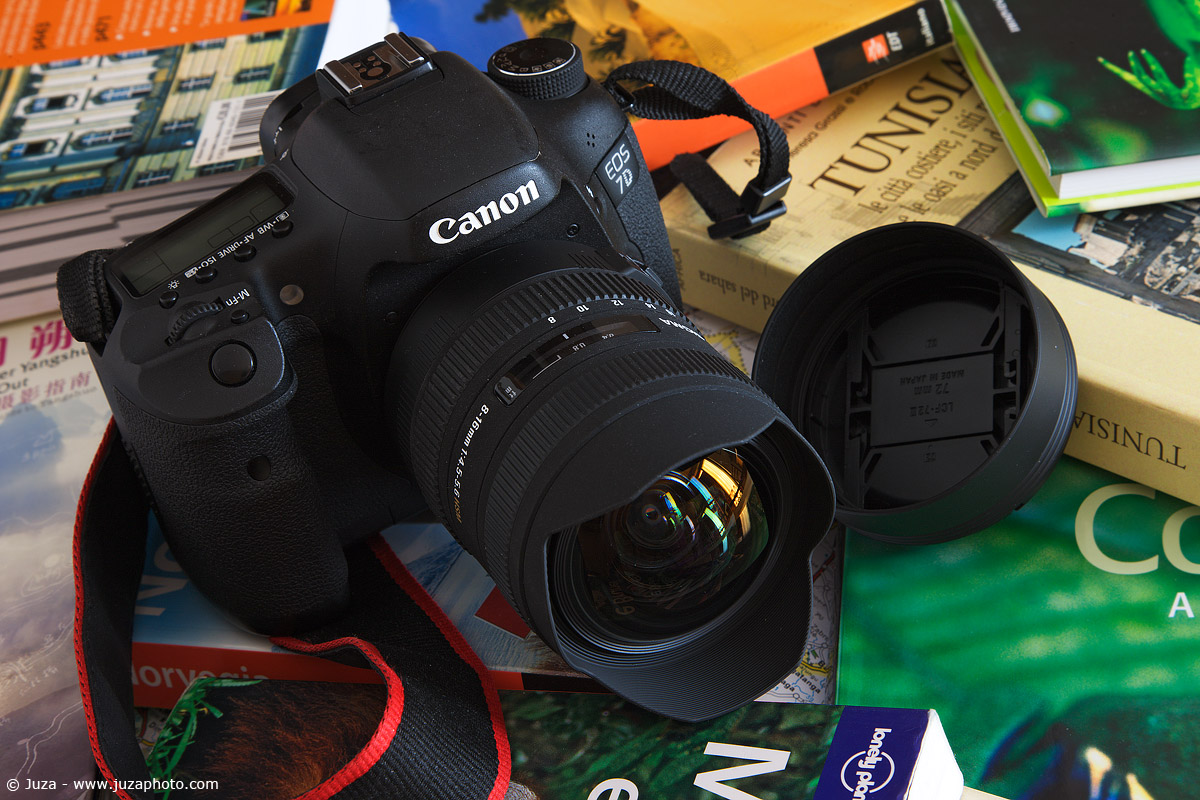











































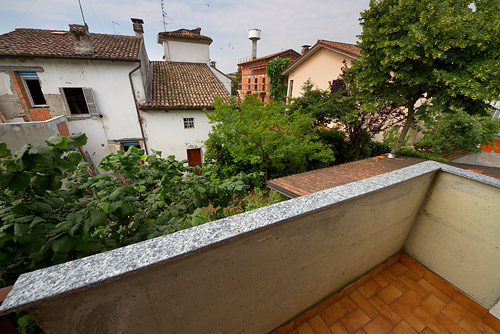
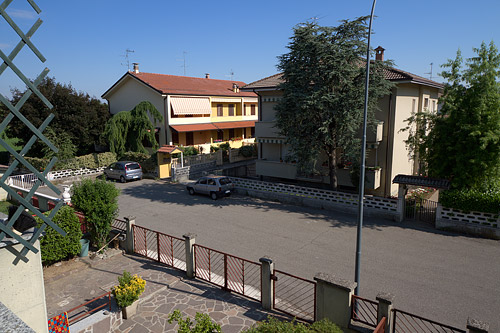
 JuzaPhoto contains affiliate links from Amazon and Ebay and JuzaPhoto earn a commission in case of purchase through affiliate links.
JuzaPhoto contains affiliate links from Amazon and Ebay and JuzaPhoto earn a commission in case of purchase through affiliate links.